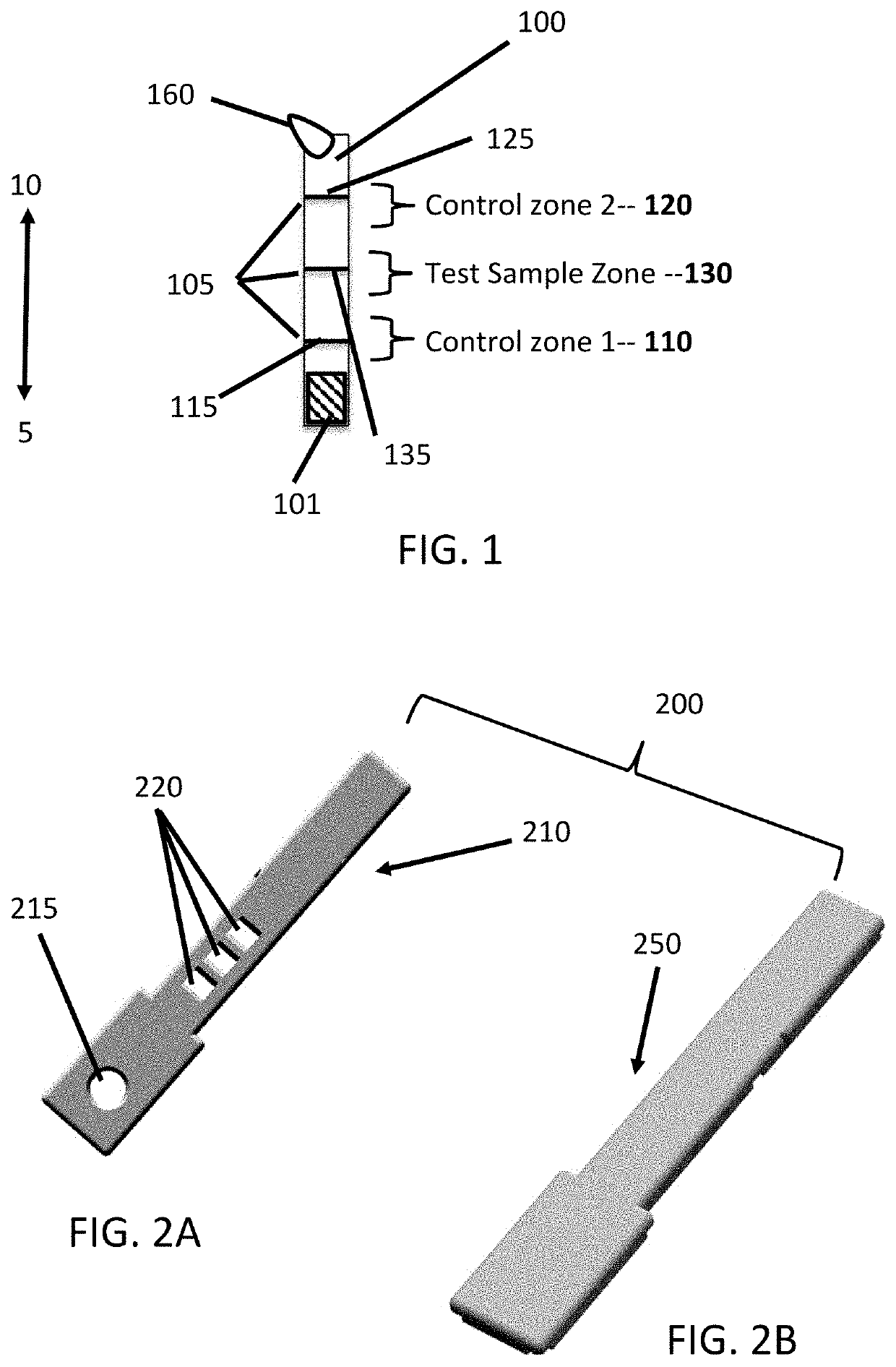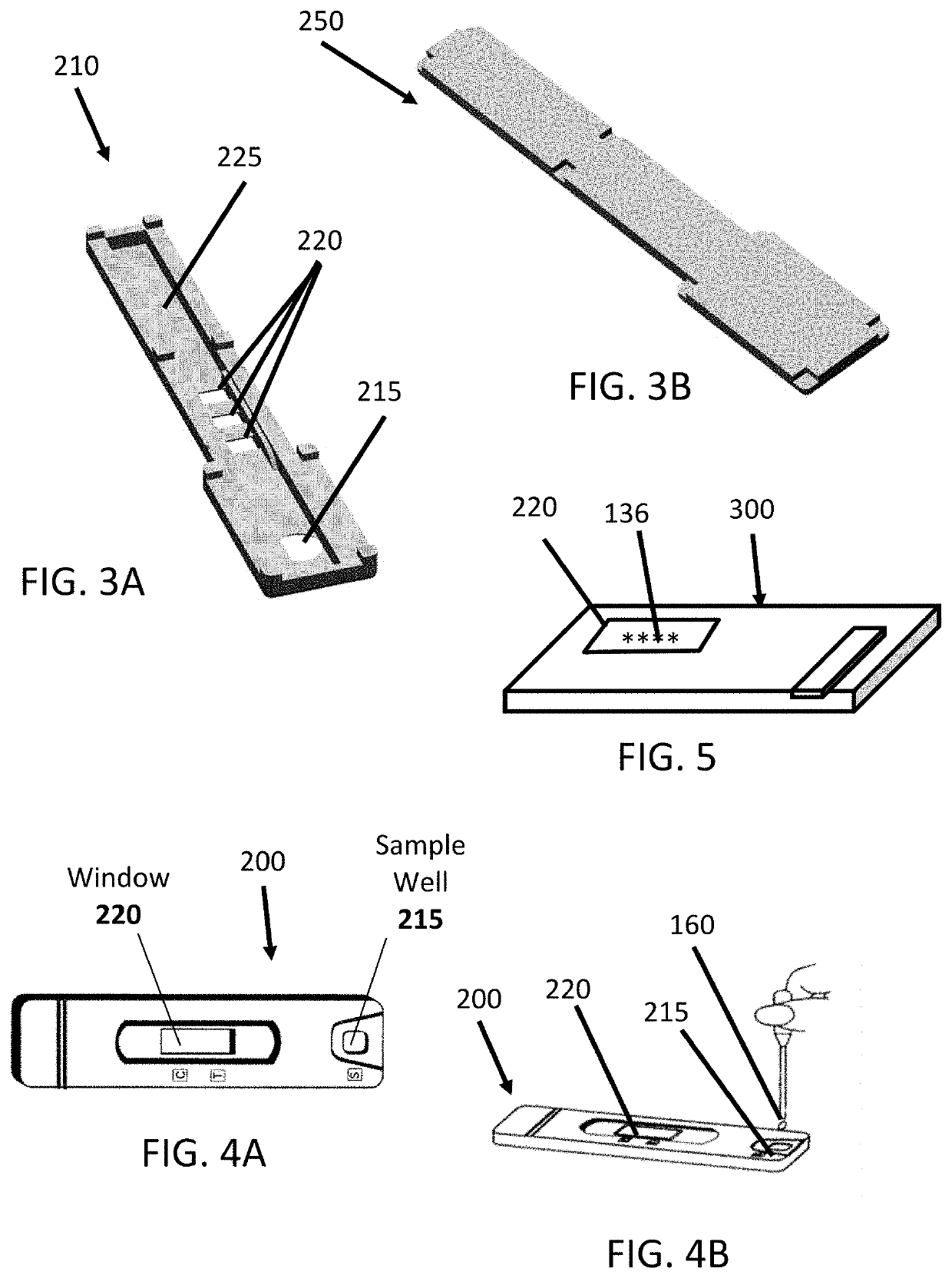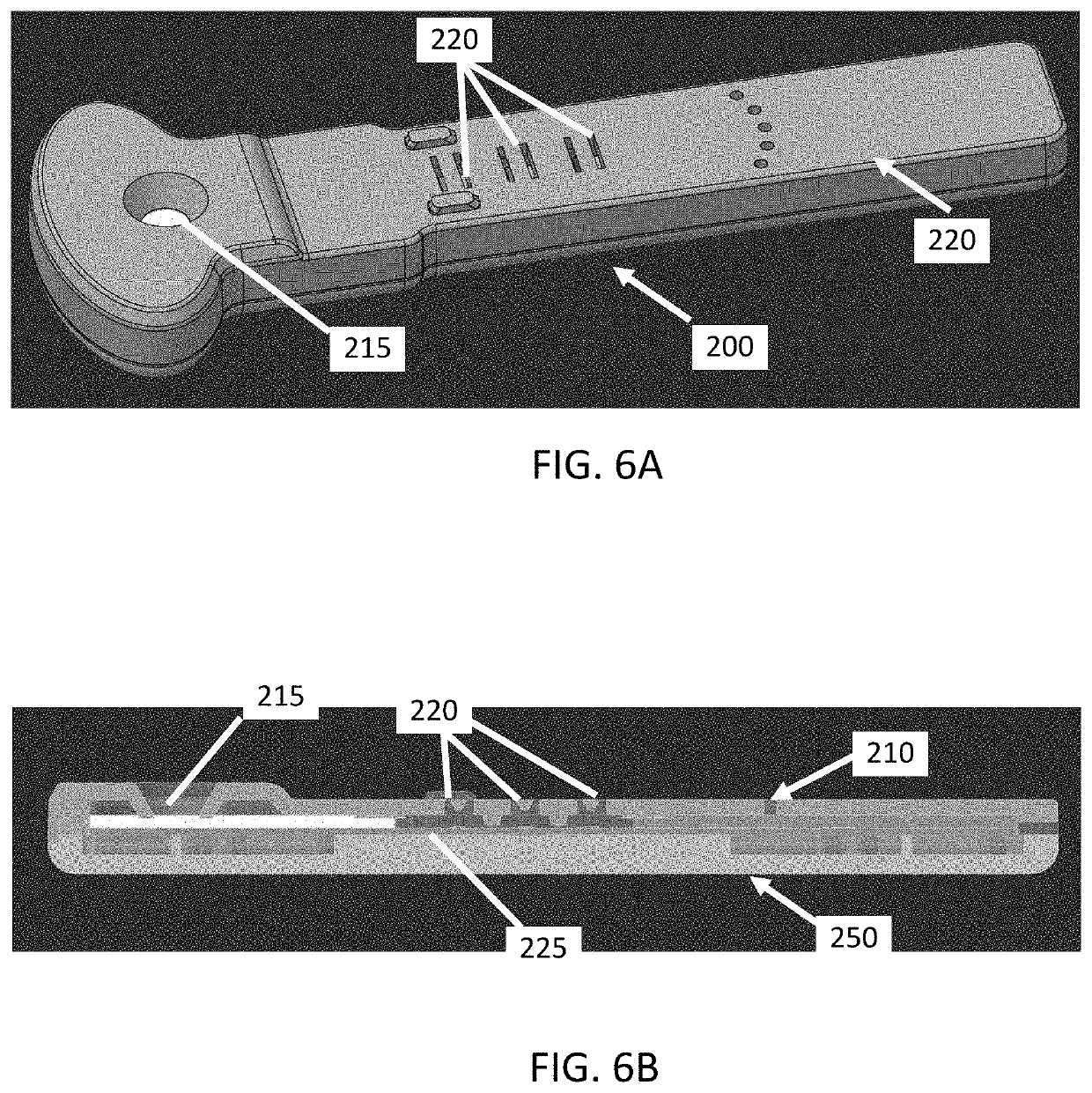Quantitative analyte detection in lateral flow immunochemistry
a technology of immunochemistry and quantitative analyte, applied in the direction of instruments, measurement devices, color/spectral property measurement, etc., can solve the problems of inconvenient reading, high cost, limited technique, etc., and achieve accurate and repeatable results.
- Summary
- Abstract
- Description
- Claims
- Application Information
AI Technical Summary
Benefits of technology
Problems solved by technology
Method used
Image
Examples
embodiment 1
[0042]A tester substrate, configured to obtain a quantitative amount of an analyte in a test sample, the tester substrate comprising:
[0043]at least one test sample zone comprising a moiety-binding substance that binds to a moiety that is the analyte or is bound to the analyte; and
[0044]at least two control zones, each control zone comprising a known different amount of the moiety-binding substance, and configured such that when contacted with the analyte in the test sample, binds with a corresponding known amount of the moiety in the test sample, such that obtaining a measure of the amount of moiety bound to each control zone provides standards against which a measure obtained for the amount of moiety bound to the test sample zone can be compared to determine a quantitative amount of the analyte in the test sample.
embodiment 2
[0045]The tester substrate according to embodiment 1, wherein the moiety is conjugated to a visual, magnetic, or fluorescent marker that causes a test sample line to be formed when the moiety binds to the at the at least one test sample zone and causes a control line to be formed in each of the at least two control zones.
embodiment 3
[0046]The tester substrate according to any of embodiments 1-2, wherein the line is measured to obtain the quantitative amount for the analyte bound at each of the at least one test zone and the at least two control zones.
PUM
| Property | Measurement | Unit |
|---|---|---|
| magnetic | aaaaa | aaaaa |
| fluorescent | aaaaa | aaaaa |
| dimensions | aaaaa | aaaaa |
Abstract
Description
Claims
Application Information
 Login to View More
Login to View More - R&D
- Intellectual Property
- Life Sciences
- Materials
- Tech Scout
- Unparalleled Data Quality
- Higher Quality Content
- 60% Fewer Hallucinations
Browse by: Latest US Patents, China's latest patents, Technical Efficacy Thesaurus, Application Domain, Technology Topic, Popular Technical Reports.
© 2025 PatSnap. All rights reserved.Legal|Privacy policy|Modern Slavery Act Transparency Statement|Sitemap|About US| Contact US: help@patsnap.com



